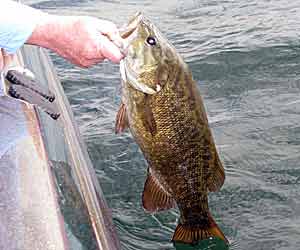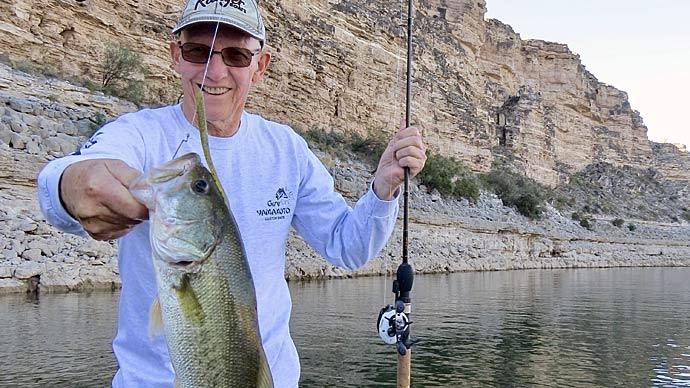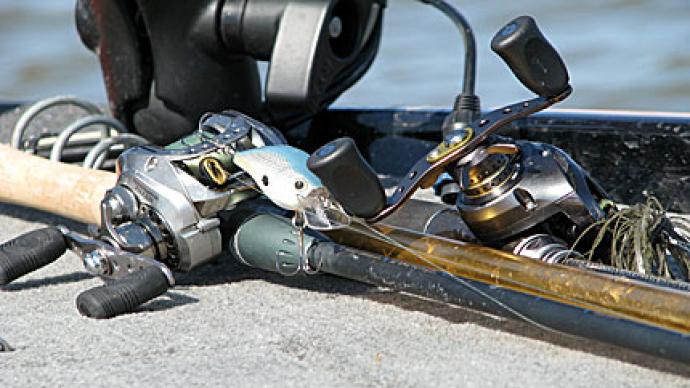
Ask any coach, and they'll tell you that taking care of the fundamentals is essential for success. In fishing, nothing is more fundamental than the knots on your fishing line. Choose the incorrect knot type for your fishing line, and you nearly cut the breaking strength in half. If or incorrectly tie a knot, the first fish or snag you encounter will likely unravel your line and steal your lure. Choosing the correct knot has become more difficult with the widespread use of braided and fluorocarbon lines. Following are the knot guidelines that I have developed after battling large bass in the heavy cover of Lake Fork.
First, let me cover a few basics of knot tying. In general, knots with two lines through the eye of the hook are better than a single strand. For years, the Palomar and Trilene knots have been favorites of many bass anglers.
Secondly, friction from tightening a knot can damage the line, so moisten the knot before pulling it tight. Finally, a poorly tied knot will not be nearly as strong as one done well. Many knots are complicated and challenging to tie at first, but once you've mastered them, they can be tied quickly and neatly, providing a secure hold.
Besides a few exceptions covered later, I stick with a few essential knots for most of my fishing, especially for monofilament. The Palomar knot is a straightforward knot to learn and tie, plus it is one of the very strongest. As a result, it's my go-to knot over 80% of the time. In some cases, I prefer a Trilene knot or a loop knot. When I'm working jigs around the cover, the tag end of the Palomar knot stands straight up and tends to hang up.
In this case, the Trilene knot is another 100% strength knot that is easy to tie, but the tag end lies towards the hook point and comes through the cover better. Like any clinch knot, your knot can fail if the tag end is too short, so leave a long tag end.
Finally, the loop knot is not as strong as a Palomar or Trilene, but it gives jerkbaits, topwaters, and small jigs the best action. Go with a loop knot and back down your drag for the best action with these lures.
I stray from my basic knots with today's new lines in some instances. Following are my recommendations for these cases.
Braided Line:
Braided lines are very slick, and many traditionally strong knots will slip, especially clinch knots. In addition, the line's small diameter and low stretch can result in break-offs on hook sets when fishing lures like a Fork Frog or Mega Weight Jig in heavy cover. For best results, run your line through the eye of the hook twice or even three times, if possible, before tying your regular knot. A standard Palomar will work OK with braid, but a Palomar with 2 or 3 wraps around the hook works better, and a Uni-Knot with the line wrapped through the eye of the hook twice works best.
Fluorocarbon:
For all of fluorocarbon's positive traits, break-offs on the hook set remain an issue for many anglers with this line. I don't hold anything back on hook sets, whether using a spinning rod or a flipping stick, and I've had great results with a Palomar knot while using fluorocarbon.
If you're having trouble with a broken line with fluorocarbon, I'd recommend you try a few things. First, fluorocarbon can be damaged if you don't moisten the line when pulling a knot tight, so make sure you get it good and wet. Secondly, be careful to tie the knots neatly, as the line can cut into itself on poorly tied knots. Finally, try the San Diego Jam knot or the Double Clinch knot. If appropriately tied, these knots are often more robust than a Palomar for fluorocarbon lines.
Leader Knots:
I'll often use a fluorocarbon leader on my braided line on lakes with clear water or when fish are pressured. I'll do this with heavy gear when I'm using 65 lb braid and 20 to 30 lb leaders when pitching Lake Fork Trophy Lure's Flippers or Craw Tubes to flooded brush or hydrilla mats. In contrast, I use 8 to 12 lb leaders with 10 to 30 lb braided lines when fishing small baits on spinning rods around the cover- the perfect blend of finesse and power. Although many folks prefer the Uni to Uni knot, I use a modified Surgeon's knot. While most knot guides show the Surgeon's Knot tied with 2 or 3 wraps, I'll weave the lines together five times. I've found the extra wraps make this knot much more robust.
Hopefully, my knot tips will help you land a few more fish this season. There are loads of detailed knot tying and line information on this site. So if you want to learn more, click the links below, and you'll be able to find step-by-step instructions. Here's hoping you catch the lunker of your dreams.




